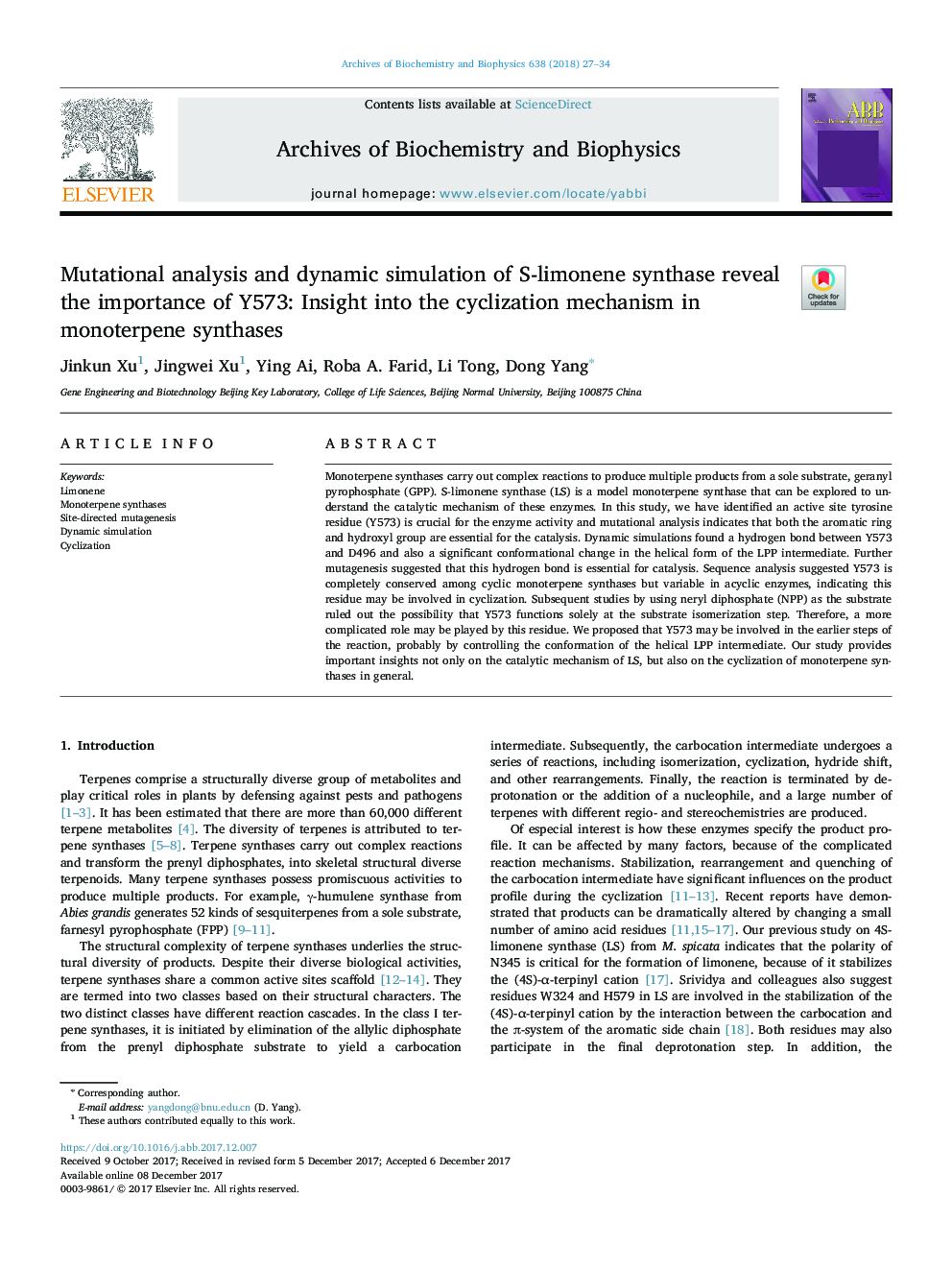| Article ID | Journal | Published Year | Pages | File Type |
|---|---|---|---|---|
| 8288814 | Archives of Biochemistry and Biophysics | 2018 | 8 Pages |
Abstract
Monoterpene synthases carry out complex reactions to produce multiple products from a sole substrate, geranyl pyrophosphate (GPP). S-limonene synthase (LS) is a model monoterpene synthase that can be explored to understand the catalytic mechanism of these enzymes. In this study, we have identified an active site tyrosine residue (Y573) is crucial for the enzyme activity and mutational analysis indicates that both the aromatic ring and hydroxyl group are essential for the catalysis. Dynamic simulations found a hydrogen bond between Y573 and D496 and also a significant conformational change in the helical form of the LPP intermediate. Further mutagenesis suggested that this hydrogen bond is essential for catalysis. Sequence analysis suggested Y573 is completely conserved among cyclic monoterpene synthases but variable in acyclic enzymes, indicating this residue may be involved in cyclization. Subsequent studies by using neryl diphosphate (NPP) as the substrate ruled out the possibility that Y573 functions solely at the substrate isomerization step. Therefore, a more complicated role may be played by this residue. We proposed that Y573 may be involved in the earlier steps of the reaction, probably by controlling the conformation of the helical LPP intermediate. Our study provides important insights not only on the catalytic mechanism of LS, but also on the cyclization of monoterpene synthases in general.
Related Topics
Life Sciences
Biochemistry, Genetics and Molecular Biology
Biochemistry
Authors
Jinkun Xu, Jingwei Xu, Ying Ai, Roba A. Farid, Li Tong, Dong Yang,
